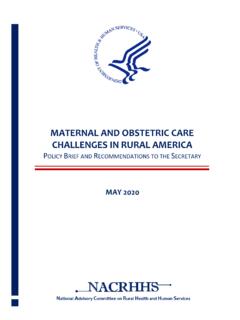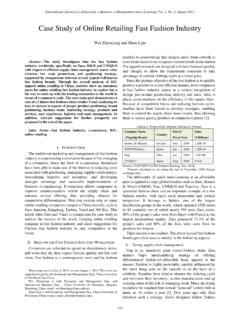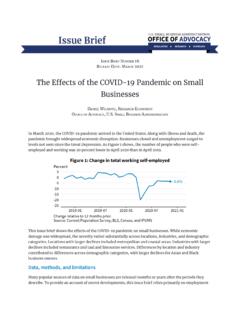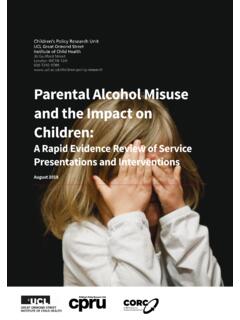Transcription of PART I Introduction to Teaching and Learning Mathematics
1 PART IChapter 1 Introduction to the Field of Mathematics EducationChapter 2 Key Psychological Ideas and Research Findings in Mathematics EducationChapter 3 Planning Mathematics Lessons Chapter 4 Mathematics Curriculum Models and TechniquesChapter 5 Implementing and Assessing Mathematics Lessons and CurriculaChapter 6 Becoming a Professional Mathematics TeacherIntroduction to Teaching and Learning Mathematics3 The past few decades have seen incredible growth in the study of Teaching and Learning Mathematics . K 12 teachers, university professors, and other educators have produced standards documents, research reports, and cur-riculum frameworks with the potential to help improve students Learning . All of this activity makes it an exciting time to enter the profession of Mathematics Teaching . However, it can also be overwhelming to try to digest and reflect on everything the field has to offer.
2 In fact, one is never really done Learning about Teaching mathemat-ics. The best teachers are always Learning ways to improve their practices by talking with colleagues, reading research, reading teachers journals, carefully assessing the impact of their instructional practices on their students thinking, and adjusting their practices to maximize students goal of this chapter is to provide a sense of the major issues and trends that have shaped the field of Mathematics education in the recent past. By way of intro-duction, we will examine the standards documents published by the National Coun-cil of Teachers of Mathematics (NCTM), an organization with more than 90,000 members dedicated to improving Mathematics education. We will then examine trends in Mathematics Teaching and Learning around the world and the central mes-sages of the reform movement in Mathematics education.
3 The objective is not to completely cover or give a comprehensive treatment of each of these topics volumes have already been written on each of them and resources for further study are given at the end of the chapter. Instead, the chapter provides a frame of reference for understanding the rest of the text. Remember, the best teachers are those who are always Learning , and reading this chapter represents just the first step in a career-long journey of navigating the Brief History of NCtM stANdArdsThe 1980s and 1990s marked the beginning of the standards movement because of the effort put into developing standards for Teaching and Learning in various subject areas. NCTM released three standards documents during this period: (1) Curriculum Introduction to tHe field of Mathematics eduCAtioNChapter 14 Part I Introduction to Teaching and Learning MatheMatIcsand Evaluation Standards for School Mathematics (1989), (2) Professional Standards for Teaching Mathematics (1991), and (3) Assessment Standards for School Mathematics (1995).
4 The major themes from this first round of stan-dards laid the groundwork for a fourth influential document, Principles and Stan-dards for School Mathematics (NCTM, 2000). To understand the current state of the field of Mathematics education, it is important to grasp the central messages conveyed by each and Evaluation StandardsNCTM s Curriculum and Evaluation Standards for School Mathematics (1989) described a vision for the Teaching and Learning of Mathematics that differed sharply with much of conventional practice. For example, in regard to algebra, it called for more attention to (1) developing an understanding of variables, expressions, and equations (p. 70) and (2) the use of real-world problems to motivate and apply theory (p. 126). Less attention was to be given to (1) manipulating symbols (p.)
5 70) and (2) word problems by type, such as coin, digit, and work (p. 127). The docu-ment contained similar direction for other Mathematics content areas, including number and operations, geometry, and measurement. The recommendations sought to move school Mathematics beyond an exclusive focus on the Teaching and Learning of procedures. A central emphasis was helping students to understand the impor-tance of the connections among mathematical topics and those between Mathematics and other disciplines (p. 146).Curriculum and Evaluation Standards was also revolutionary in its call for more attention to historically neglected areas such as statistics, probability, and discrete Mathematics . Although many important applications of these content areas could be found in contemporary society, they were largely absent from the school Mathematics curriculum.
6 The recommendation to give more attention to neglected areas was based on the premise that the school curriculum should change as the needs of soci-ety change. This premise also dictated that the school curriculum should take advan-tage of technology to help students understand the conceptual underpinnings of Mathematics . In sum, Curriculum and Evaluation Standards recommended reform in what was taught as well as how it was Standards for Teaching MathematicsProfessional Standards for Teaching Mathematics helped further clarify NCTM s vision for school Mathematics reform. It recommended five major shifts in mathemat-ics classroom environments: Toward classrooms as mathematical communities away from classrooms as simply a collection of individuals; Toward logic and mathematical evidence as verification away from the teacher as the sole authority for right answers; Toward mathematical reasoning away from merely memorizing procedures; Toward conjecturing, inventing, and problem-solving away from an emphasis on mechanistic answer-finding;Chapter 1 Introduction to the Field of Mathematics Education 5 Toward connecting Mathematics , its ideas, and its applications away from treating Mathematics as a body of isolated concepts and procedures.
7 (NCTM, 1991, p. 3)NCTM (1991) recognized that these shifts would not occur overnight. Sustained professional development would be necessary to help teachers imple-ment the Standards for School MathematicsAssessment Standards for School Mathematics marked the end of the first round of NCTM standards documents. The document defined assessment broadly as the pro-cess of gathering evidence about a student s knowledge of, ability to use, and disposi-tion toward, Mathematics and of making inferences from that evidence for a variety of purposes (NCTM, 1995, p. 3). From this perspective, one of the primary purposes of assessment is to provide teachers information about the nature of student Learning . Information about students Learning can be drawn from a variety of sources. Instead of relying solely on paper-and-pencil tests, teachers can draw information from stu-dent interviews, projects, and portfolios.
8 Information gained about students Learning can in turn help shape future lesson and Standards for School MathematicsPrinciples and Standards for School Mathematics (NCTM, 2000) differed from previ-ous standards documents in that its intent was to write standards that build on the foundation of the original Standards documents; integrate the classroom-related portions of Curriculum and Evaluation Standards for School Mathematics , Professional Standards for Teaching Mathematics , and Assessment Standards for School Mathematics ; organize recommendations into four grade bands: prekindergarten through Grade 2, Grades 3 5, Grades 6 8, and Grades 9 12. (p. x)Principles and Standards for School Mathematics organized its discussion of Mathematics content around five content standards: number and operations, algebra, geometry, measurement, and data analysis and probability.
9 The second half of this text uses a similar organizational scheme by devoting chapters to each of the content standards (with the exception that measurement is distributed among the other content strands).NCTM s Professional Standards for Teaching Mathematics calls for five major shifts in the environ ment of Mathematics classrooms (see the preceding discussion). What changes, if any, would your past Mathematics teachers in Grades K 12 have needed to make to align their instruction with the five recommendations? Provide specific TO REFLECT6 Part I Introduction to Teaching and Learning MatheMatIcsAs a consolidation and elaboration of the previous NCTM standards documents, Principles and Standards for School Mathematics represents the closest we have come to a consensus about which mathematical topics should be taught in school and how they should be taught.
10 Teachers, university professors, Mathematics supervisors, and other professionals spent three years constructing the document. As it was being written, feedback was elicited from stakeholders in Mathematics education around the world. It should be noted, however, that consensus on the vision of NCTM stan-dards has never been, and likely never will be, universal. For example, some disagree with the decreased emphasis on lecture as a Teaching method (Wu, 1999b) or the manner in which technology is to be integrated into the curriculum (Askey, 1999). These kinds of conflicts have been characterized as parts of a larger math war over the content of the school curriculum (Schoenfeld, 2004). As with most events charac-terized as wars, much of the conflict is based on the opposing sides misunderstand-ing each other. This book is based on the premise that one must seek to understand the NCTM standards before condemning or accepting them.














